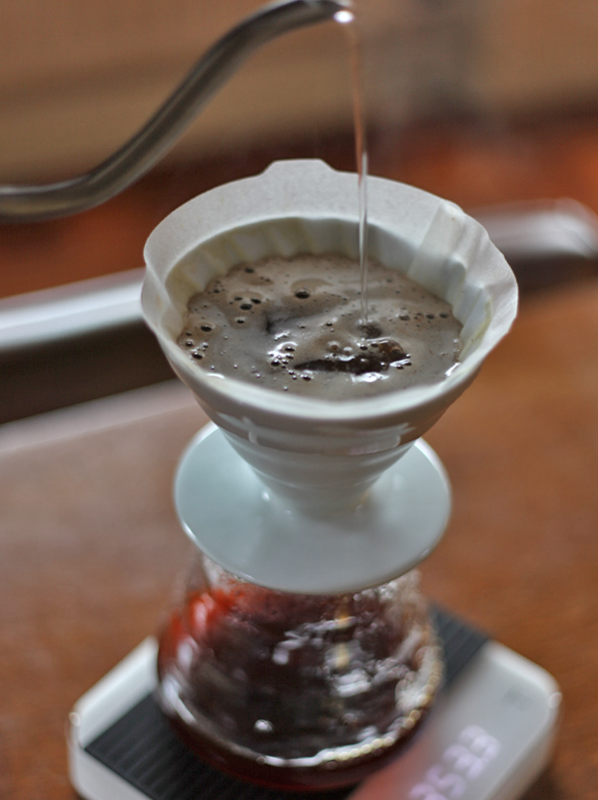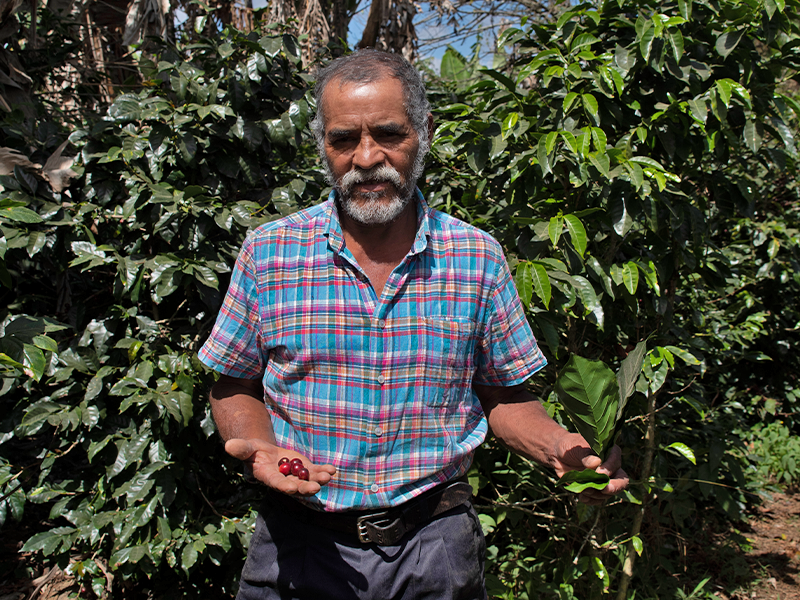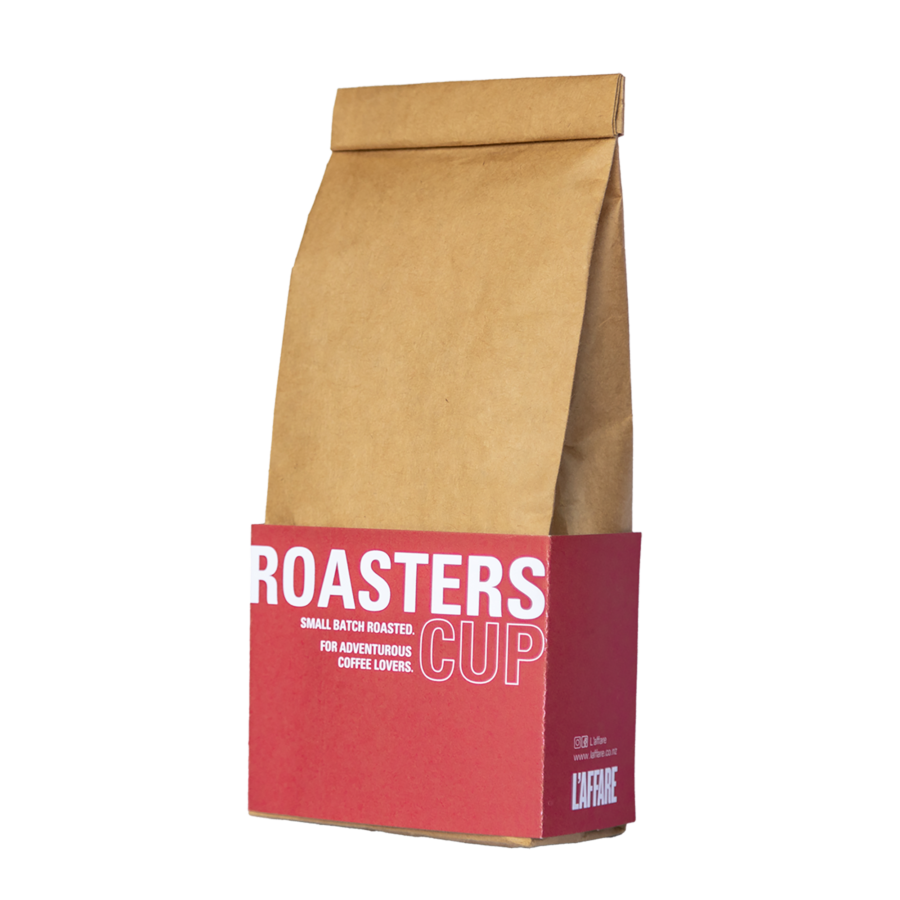Washing station in Kenya
The Science of Coffee
Several Varieties / Endless Possibilities
The coffee bean is one of two seeds from the coffee tree. There are two main species of coffee plant Coffea Arabica and Coffea Canephora (Robusta) each with well over 150 different documented varietals.
Arabica
Growing best at altitudes over 900 meters above sea level and requiring certain climate and soil conditions, Arabica coffees are widely regarded for producing the highest quality and most desirable flavours. Specialty coffee is nearly always Arabica.
Robusta
As its name would suggest, Robusta is more resilient, growing at lower altitudes and is more resistant to disease. It typically will produce coffee with a distinct astringent flavour with higher levels of caffeine making it ideal for instant coffee production.
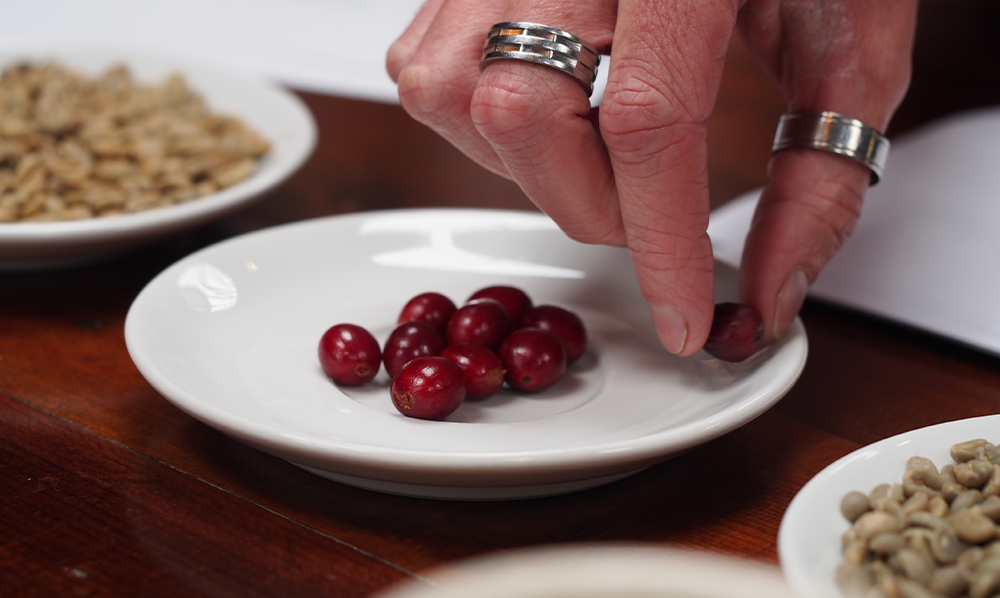
From cherry to bean
In order to roast coffee, the green beans must be extracted from the cherry and dried. There are three main methods for doing this, often based on the natural environment – access to water etc. Each method has an impact on the coffee flavour.
Wet Process – Washed Coffee
A mechanical pulper is used to remove the skin and flesh of the cherry before the beans are soaked in water. This process removes the sticky mucilage from the bean. After washing the coffee is dried. Washed coffees typically produce clean and bright flavours.
Dry Process – Natural Coffee
In this process the coffee is dried as a full cherry. Once the drying process is complete the cascara (dried cherry) is removed mechanically or manually in large mortar and pestle. Natural processed coffee is typically sweeter with heavier body due to the absorption of fruit sugars from the cherry.
Honey Process / Pulped Natural
There are several variations of the honey process, but all involve the coffee bean being dried with the mucilage (honey) sill attached to the bean for part or all of the process. Honey process coffees typically have the sweeter flavours of naturals along with the clarity of washed coffee.
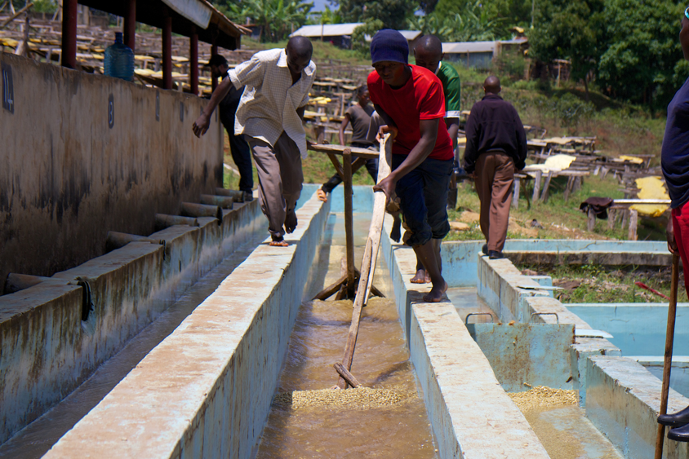
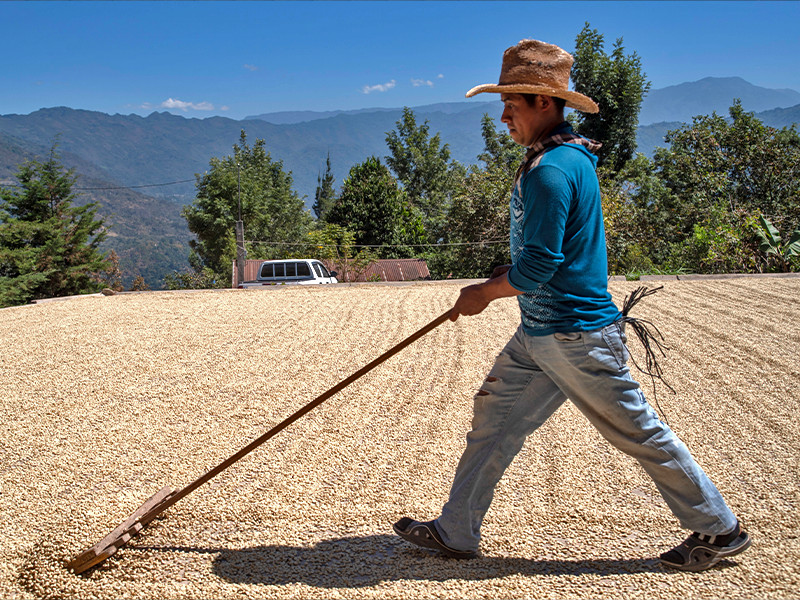
Coffee being turned
The good, the bad and the ugly
Once coffee has been processed it moves to the last stage grading. The beans are first milled to remove the parchment before being sized through screens. For ideal roasting, beans must be of an even size. High quality coffees will be then checked for defects which will be removed.
Specialty
The highest grade. 10-12% Moisture content, no more than 5% variation in size, no category one defects, no more than five category two defects. Cup score must be higher than 80 points and be free of cup faults. This is the coffee L’affare buy and roast.
Premium
Secondary grade coffee. 9-13% moisture content. Maximum of 5% above and bellow in screen size. Up to eight defects including category one defects. Cup score is typically 75 – 79.75 points and free of cup faults.
Commodity
Third grade coffee. 9-13% moisture content, must be 50% above screen size 15 with between 9-23 defect count. Cup score will typically be bellow 75.
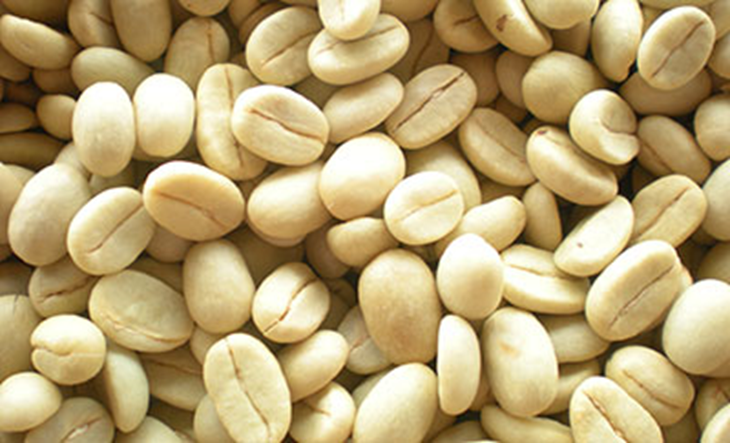
Parchment coffee
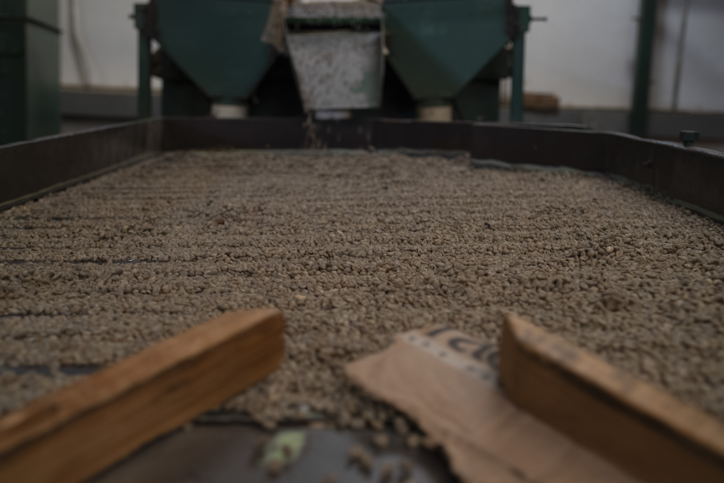
Sizing table – Mexico
Origin – Countries and Regions
The Coffee growing regions fall into the ‘bean belt’ – roughly bound by the Tropic of Cancer and the Tropic of Capricorn.
Growing regions are typically defined with rich soils (often volcanic), high altitudes (up to 2000 MASL), moderate sunlight exposure and rainfall and consistent year-round temperatures.
The three main regions are defined into:
- The Americas
- Africa
- Asia
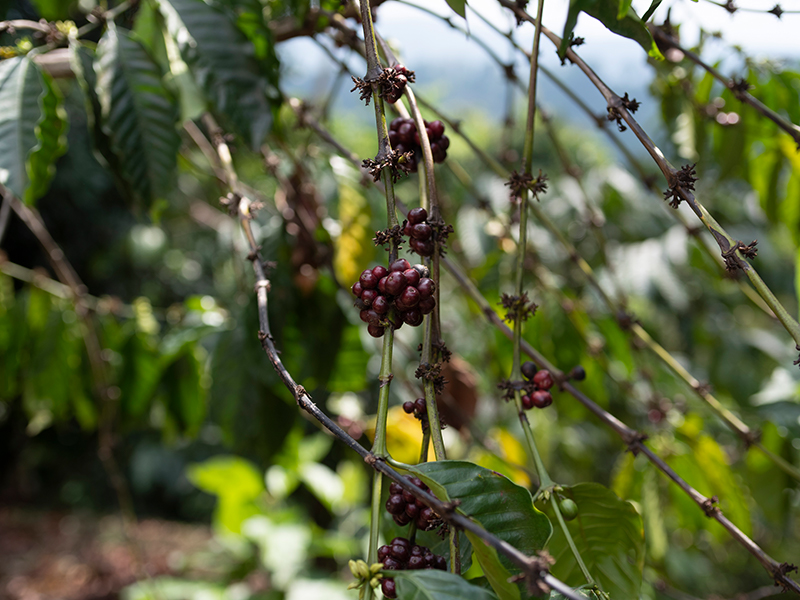
From green to brown
Here at L’affare we use a combination of drum roasters to roast our coffee. Hot air is passed through a rotating drum which continuously tumbles green coffee through the roasting cycle.
Taking approximately 15 minutes, the green beans lose an additional 20% of their moisture and expand in size by as much as 50%. As the moisture evaporates the cell walls of the bean break creating a distinctive popping noise known as first crack. From this stage the roaster will monitor the coffee as the complex sugars begin to caramelize as the roast development occurs. If this development continues a second crack will occur. From this point the sugars will begin to burn.
Typically, roasters will finish their roast at some point between first and second crack. Lighter roasts are typically suited to filter style brewing and highlight the acidity and natural flavours of the bean. Darker roasts suit higher pressure brewing methods like espresso with fuller body and higher sweetness due to the caramelization. Very dark roasts can have bitter, smokey characteristics.
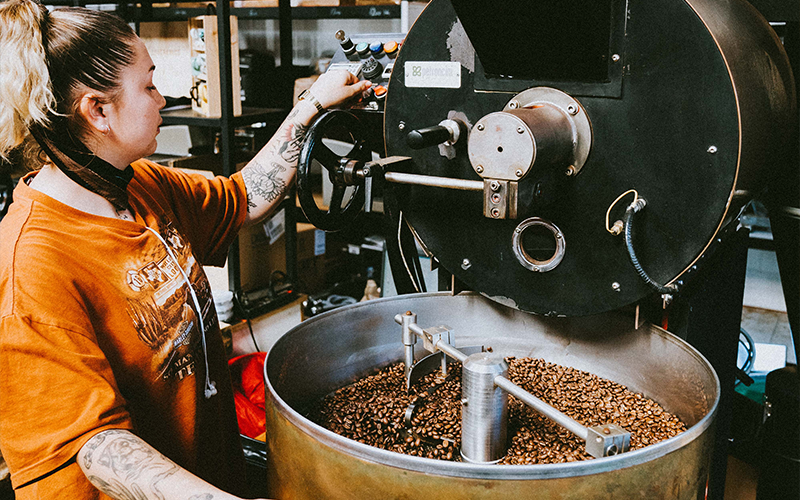
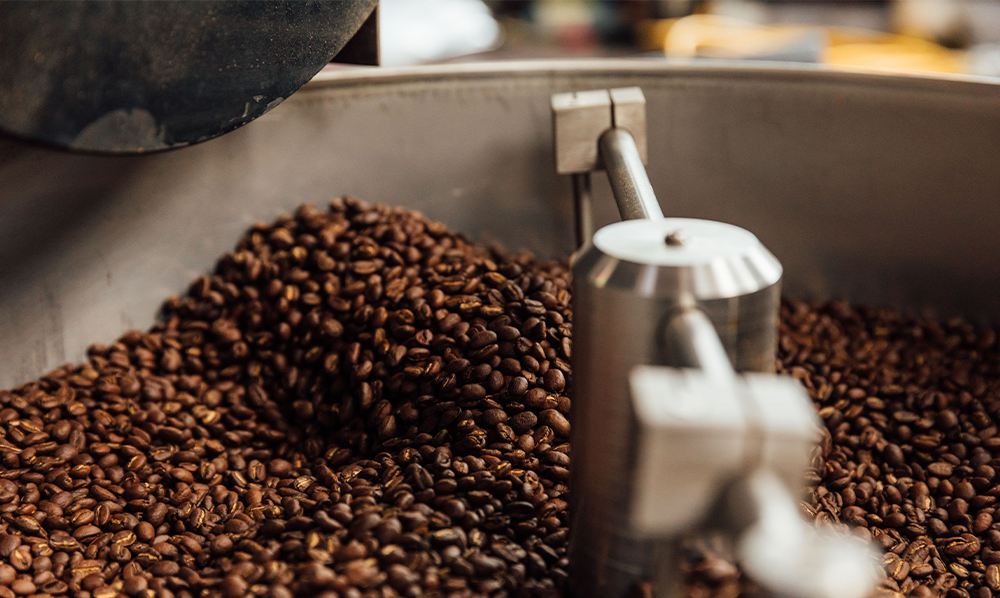
Bringing together the best of the best
Combining two or more coffees from different coffee origins is called blending. The aim is to combine coffees with complimentary characteristics. This process allows the roaster to supply a coffee that has a consistent flavour profile.
As coffee flavours will change seasonally a blends recipe can be altered to keep the target flavour profile consistent.
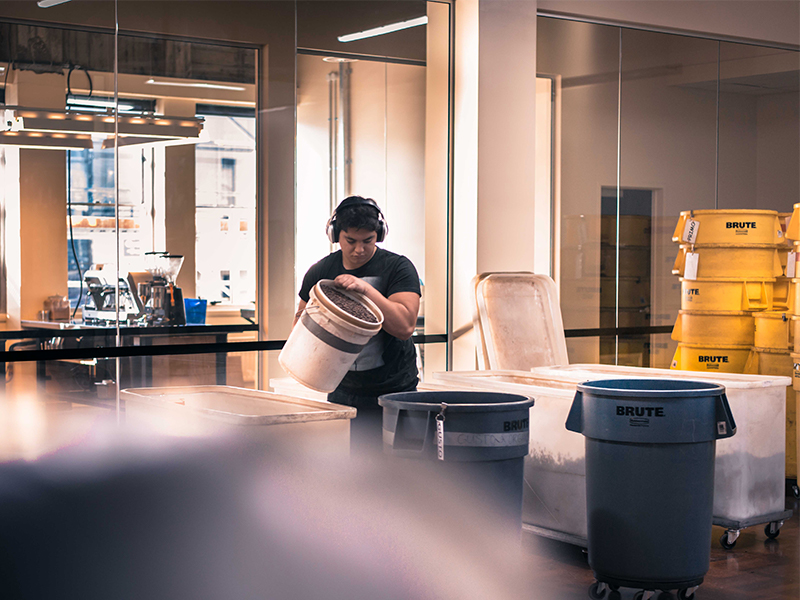
It’s all about the flavour
Great coffee is about it all coming together to taste great. The varietal of the plant, the altitude of the farm, the soil type, sunlight and rainfall, the processing, roasting and blending. All the factors of seed to cup lead up to this point. Coffee should just taste great.
Smell
- Fragrance – the smell of the roasted coffee
- Aroma – the smell of brewed coffee
Taste
- Flavour – the characteristics and flavours within a coffee
- Acidity – the pleasant ‘brightness’ of a coffee
Feel
- Body – the texture and weight of the coffee in your mouth
- Finish – the residual feeling and lingering aftertaste
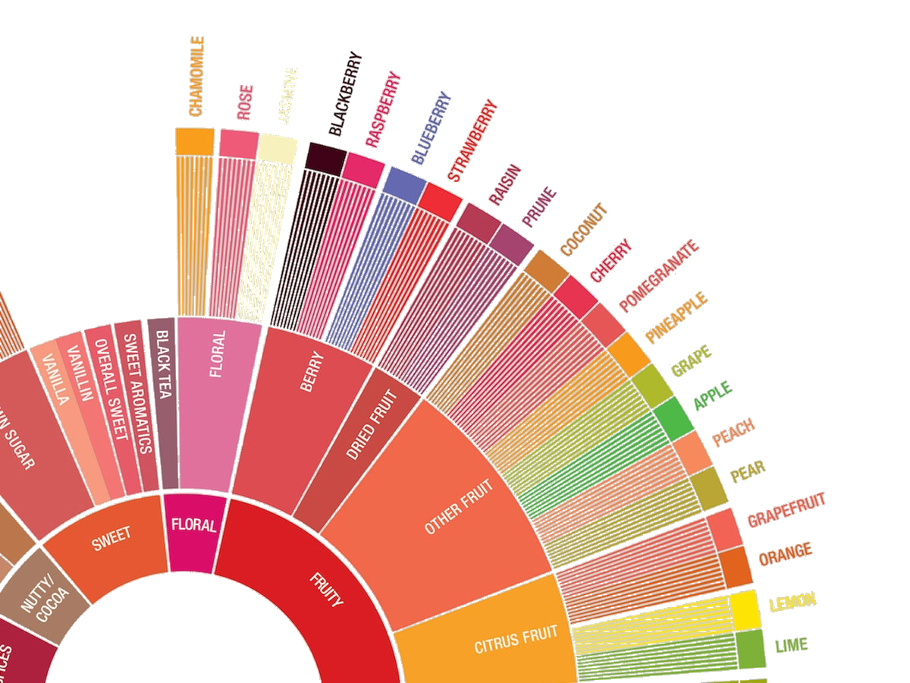
Coffee no filter
Cupping is a formal practice of assessing coffee flavours and quality. It is arguably the most important practice in the coffee industry and should be carried out at various stages throughout the coffee trading process:
- At origin where coffee is graded
- By green bean buyers selecting coffee to purchase
- By roasteres receiving pre-shipment samples
- By roasters receiving coffee shipments
- After roasting for quality checks
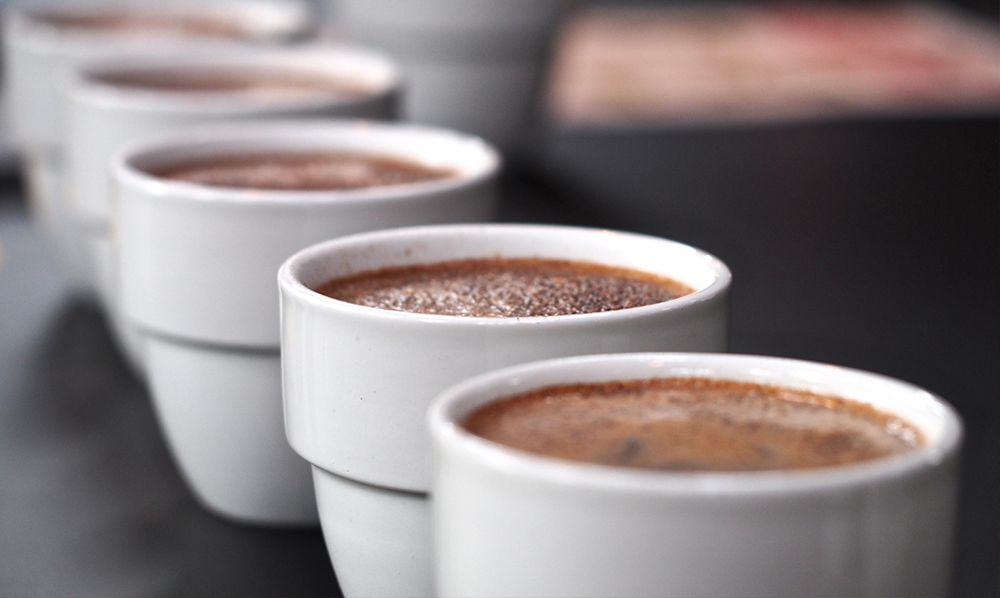
Making it taste good
It’s a true science experiment
Several factors come together to brew coffee well, with each factor having its own impact on the final cup.
Coffee to water ratio: 60gm per 1 litre
- Too much coffee and not enough water results in a thick ‘strong’ bitter brew
- Too much water and not enough coffee results in a thin, ‘weak’ sour brew
Water Temp: 93℃ – 95℃
- Don’t brew too hot. Let your jug cool after it boils.
Choose your grind
- Always grind your coffee fresh whenever it is practical to do so.
- Finer grind for faster brews – Espresso and stovetop
- Coarse grind for slower brews – Plunger and Coldbrew
- Something in between – Pour over filter brewing
